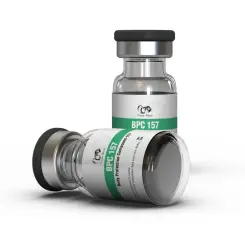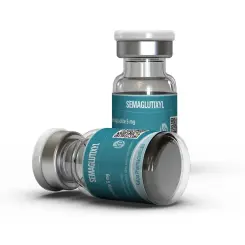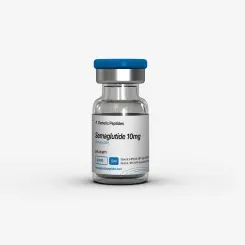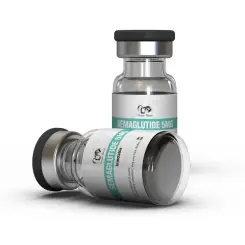Semaglutide 2 mg
- Improves blood sugar regulation.
- Promotes significant weight loss.
- Reduces appetite and food cravings.
- Enhances overall metabolic health.
Is 2 mg Semaglutide a Lot?
2 mg of Semaglutide is not considered a high dose; it falls within the typical therapeutic range (0.25-2.4 mg weekly) for managing type 2 diabetes and obesity. However, it's a moderate starting dose, and titration under professional guidance is recommended to assess tolerance and avoid side effects.
What is Semaglutide 2mg Used For?
Semaglutide 2 mg is used to manage type 2 diabetes, promote weight loss, and improve metabolic health in research and off-label contexts. It regulates blood sugar, reduces appetite, and supports weight reduction, requiring reconstitution and subcutaneous injection.
Can Semaglutide Cause a Rash?
Yes, Semaglutide 2 mg can cause a rash as a rare allergic reaction, often due to sensitivity to the peptide or its preservatives. Symptoms include redness or itching; discontinue use and consult a professional if a rash appears, seeking medical attention if severe.
How Does Semaglutide 2 mg Work?
Semaglutide 2 mg activates GLP-1 receptors, increasing insulin release, suppressing glucagon, slowing gastric emptying, and reducing appetite. This multifaceted action improves glycemic control and promotes weight loss, with effects starting within hours and peaking over weeks.
Is Semaglutide 2 mg Safe?
Semaglutide 2 mg can be safe when used responsibly under professional guidance, with a well-established profile for type 2 diabetes and obesity management. Potential risks include gastrointestinal issues, rare pancreatitis, or thyroid concerns. Regular monitoring of blood sugar and thyroid function is advised. Not recommended for pregnant individuals or those with certain thyroid cancers without medical oversight.
How Long Does Semaglutide 2 mg Stay in Your System?
Semaglutide 2 mg has a half-life of approximately 1 week (about 168 hours), allowing for once-weekly dosing. It remains detectable in the body for up to 4-5 weeks, depending on dosage, metabolism, and testing methods. Bloodwork and professional guidance are advised for precise clearance timelines.
Mechanism of Action Semaglutide 2 mg
Semaglutide binds to GLP-1 receptors, enhancing insulin secretion in a glucose-dependent manner, inhibiting glucagon release, and reducing appetite via the hypothalamus. This promotes weight loss and glycemic control. Effects begin within hours and sustain with weekly dosing. Users notice appetite suppression within days. What doesn't happen: no direct muscle growth, but monitoring is key.
How It Works & Key Benefits
Semaglutide 2 mg excels for individuals managing type 2 diabetes or seeking weight loss, requiring a balanced diet and exercise to maximize its metabolic benefits.
- Improves blood sugar regulation.
- Promotes significant weight loss.
- Reduces appetite and food cravings.
- Enhances overall metabolic health.
- Delivers sustained GLP-1 action.
- Stacks with lifestyle interventions for synergy.
Who It's For & Product Specifications
Best for adults with type 2 diabetes or weight management needs; suitable for men and women with medical supervision. Not recommended for beginners, pregnant individuals, or those with thyroid cancer history without professional guidance.
| Substance | Glucagon-Like Peptide-1 (GLP-1) |
|---|---|
| Concentration | 2 mg |
| Form | Vial (requires reconstitution) |
| Pack Size | Vial |
| Half-life | ~1 week |
| Aromatization/Hepatic | Non-applicable / Minimal hepatic |
| Primary Use | Weight loss, diabetes management |
| Manufacturer | Generic Peptides |
| Brand | Semaglutide |
How to Take Semaglutide 2 mg
- Dosage: Men/Women: 0.25-1 mg per week, titrated up from a lower dose (e.g., 0.25 mg), reconstituted; start low to assess tolerance.
- Frequency: Once weekly, preferably on the same day each week.
- Cycle length: 3-6 months or as prescribed, followed by evaluation; discontinue if adverse effects occur.
- Preparation/Monitoring tips: Reconstitute with 1-2 ml Bacteriostatic Water using a sterile syringe (29-31 gauge), inject subcutaneously; monitor blood sugar, weight, and side effects via labs; maintain hydration.
- Results timeline: Appetite reduction in 1-2 days; weight loss in 4-8 weeks.
- PCT timing: Not required, but monitor metabolic markers post-cycle; consult a professional.
Popular Stacks
Liraglutide: Enhances weight loss synergy.
Metformin: Boosts diabetes management.
Tirzepatide: Complements GLP-1 action.
Cycle Support: Supports overall health during use.
Comparisons & Alternatives
Semaglutide 2 mg vs Semaglutide 10 mg: 2 mg is a lower dose for cautious use; 10 mg offers higher potency.
Semaglutide 2 mg vs Liraglutide: Both are GLP-1 agonists; Semaglutide has a longer half-life.
Side Effects & Risk Management
- Gastrointestinal: Nausea—reduce dose, eat smaller meals.
- Systemic: Hypoglycemia (rare)—monitor blood sugar, adjust if needed.
- Other: Allergic reaction (rare)—discontinue if rash occurs.
Consult a professional to ensure safe use and monitor metabolic and overall health.
FAQ
Is 2 mg semaglutide a lot?
No, it's a moderate dose; see Is 2 mg Semaglutide a Lot. Titrate with care—consult professionals.
What is semaglutide 2mg used for?
It manages diabetes and weight; see What is Semaglutide 2mg Used For. Use with guidance—consult professionals.
Can semaglutide cause a rash?
Yes, rarely; see Can Semaglutide Cause a Rash. Seek care if symptoms appear—consult professionals.
How does Semaglutide 2 mg work?
It activates GLP-1 for metabolism; see How Does Semaglutide 2 mg Work. Monitor with oversight—consult professionals.
Is Semaglutide 2 mg safe?
It can be safe with oversight; see Is Semaglutide 2 mg Safe. Consult professionals for monitoring.
Related Products
- Improves blood sugar regulation.
- Promotes significant weight loss.
- Reduces appetite and food cravings.
- Enhances overall metabolic health.
- Speeds up muscle and tendon recovery post-injury.
- Reduces inflammation for faster healing.
- Enhances joint and tissue resilience for intense training.
- Supports gut health and systemic recovery.
- Promotes significant weight loss.
- Improves blood sugar control in type 2 diabetes.
- Reduces appetite and enhances satiety.
- Supports overall metabolic health.
- Improves blood sugar regulation.
- Promotes significant weight loss.
- Reduces appetite and food cravings.
- Enhances overall metabolic health.
- Promotes significant weight loss (up to 15-20% in trials).
- Improves glucose control and insulin sensitivity.
- Reduces appetite for easier calorie management.
- Supports cardiovascular and metabolic health.





